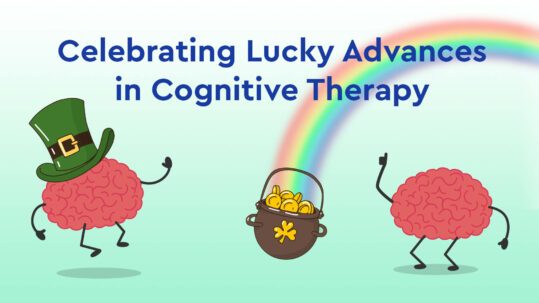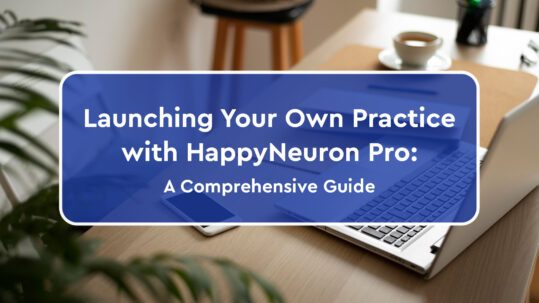Digital Tools in Cognitive Therapy: Why You Aren’t Using Them and Why You Should
You’re Not Sure It Works
The use of digital tools for cognitive rehabilitation has gained popularity in programs across the country. Dr. Alice Medalia emphasizes the utility and necessity of digital platforms in therapy. Medalia, founder of the NEAR model, incorporates digital tools during therapy for the cognitive rehabilitation of psychiatric populations.
Digital platforms allow for building and practicing skills. For digital tools to work, a therapist must direct practice and provide bridging opportunities. Without guided practice and generalization experience, any therapy will not work as the patient may not understand the link between their care and life.

You’re Not Sure Insurance Would Cover It
It is easy to mistake that digital tools can replace a therapist. If this were true, insurance companies would most likely not cover the use of these digital tools. Digital tools work like workbooks or worksheets commonly used during cognitive rehabilitation. Because these tools do not work effectively without the guidance of a clinician, a patient must work with a therapist to gain the full benefit of these digital tools. These tools are meant to be another method of practice, not replacement of a therapist and their expertise. A quality digital tool will emphasize this aspect and be centered around clinician-guided use.
Cost of tools is a common concern for organizations and private practices. If cost reimbursement is of concern, many programs offer forms for tax reimbursement if you do decide to purchase out of your own pocket.
You Don’t Know What Tools Are Out There (And Which Ones Are the Best for You)
Each tool has its own strengths and weaknesses. There are many factors to consider when selecting a digital tool for therapeutic practice. For example, one must consider the type and quantity of activities, cost, access method, and population specification of the tool.
For those with a limited budget, practitioners may be limited to choosing one platform. We suggest comparing platforms by trying them with your staff and patients. This way, both parties can provide feedback about the different platforms you may be interested in. Hands-on experience with different tools is the best way to learn which tool is best for your practice.

Your Therapy Will Continue
Many therapists set goals for their patients to meet outside of therapy. However, getting patients to practice skills outside of sessions is challenging. Adherence to treatment plans is an obstacle for cognitively compromised populations for a variety of reasons. Some of these reasons include knowledge of technology, access to technology, and cognitive complications that interfere with adherence.
Using digital platforms can help mitigate some of these obstacles. For example, our digital platform helps overcome access and technology use obstacles that your patients may face. This is because HappyNeuron Pro can be accessed anywhere with internet connection. This feature allows for patients to practice skills from the comfort of their own home.
With HappyNeuron Pro, your patient can practice cognitive skills by accessing resources from home. Sending your patients home with a workout plan that you design can be very effective for their therapy. Once they complete it, you can view their results in real-time. After you review their results, you can determine how your patient should proceed in therapy.
Your Therapy Will Change
A feature of some digital tools is that you can see how your patient is performing. With this information, you can tailor you therapy plan to focus on problem areas while maintaining strong skills.
As your patient is progressing in therapy, you can review their trends in performance. Therefore, you can gain insight into important milestones in therapy, like generalization abilities.
For example, you can task your patient with different exercises that have overlapping demands. By doing this, you can see how your patient is able to generalize practiced cognitive skills. If your patient is struggling with generalization, you can focus your therapy plan on this goal.

You’ll Have Easy Access to Different Tools
Having printed materials is common practice. Workbooks are commonly updated and can easily pile up. Navigating through books to find exercises is time consuming and tiresome. Digital tools consolidate exercises in an easy access format.
Each platform will have a different number of exercises as well as different features. For example, HappyNeuron Pro has 44+ exercises for various domains of cognition. In addition to digital resources, HappyNeuron Pro provides worksheets.
Not all platforms provide the same access to different resources. It is important to weigh availability of additional resources of each tool you’re interested in. These resources can be helpful, as they provide supplemental material not on the digital platform.

Using a digital tool in your therapy offers many benefits to patients and clinicians. It allows patients to practice skills, use technology, and continue building skills from home. For the clinician, digital tools consolidate hard materials, save time, and can provide easy access results. Selecting tools can be daunting. It is important that therapists try different tools with their staff and patients before deciding on which tool they purchase.









